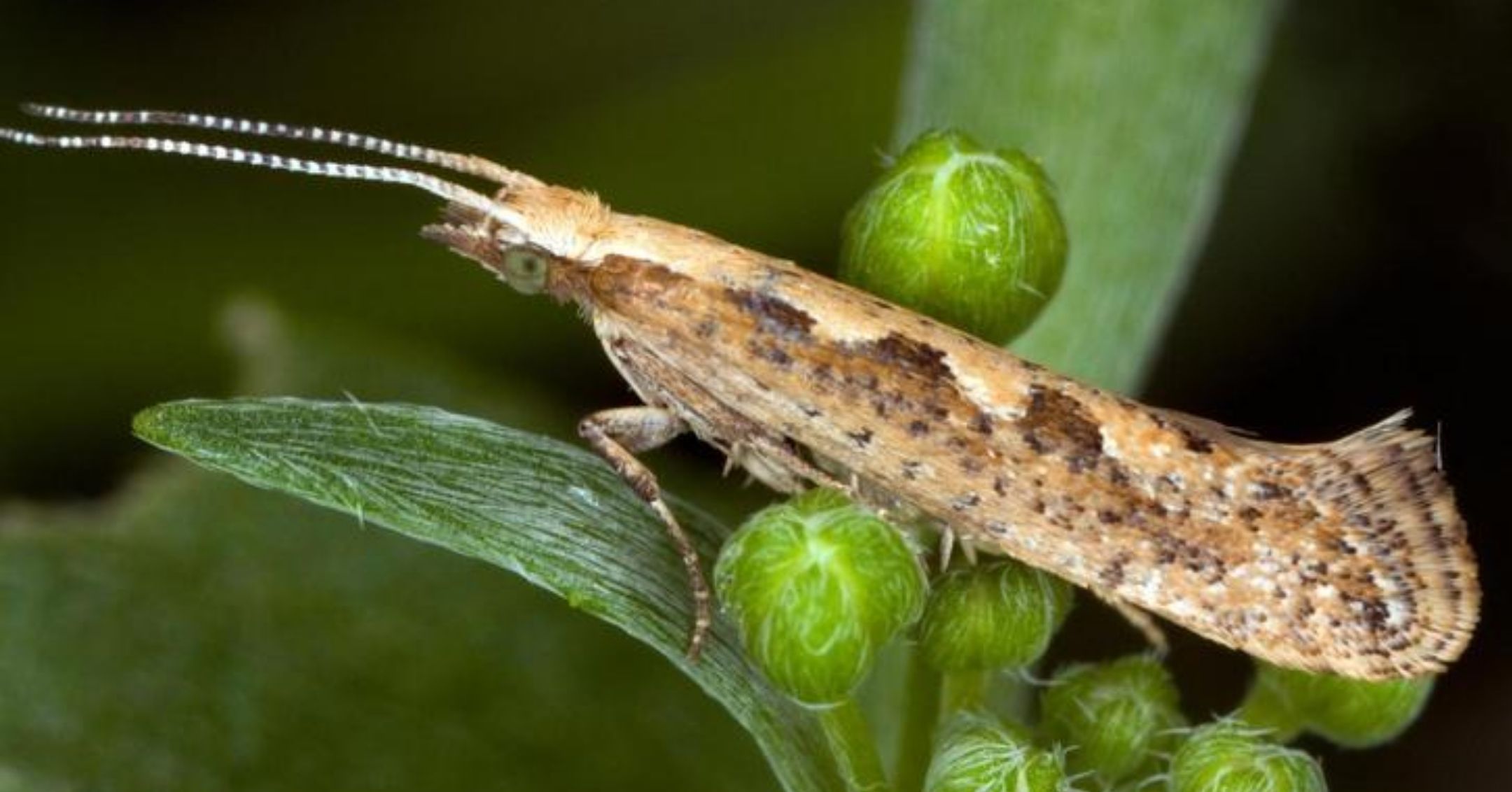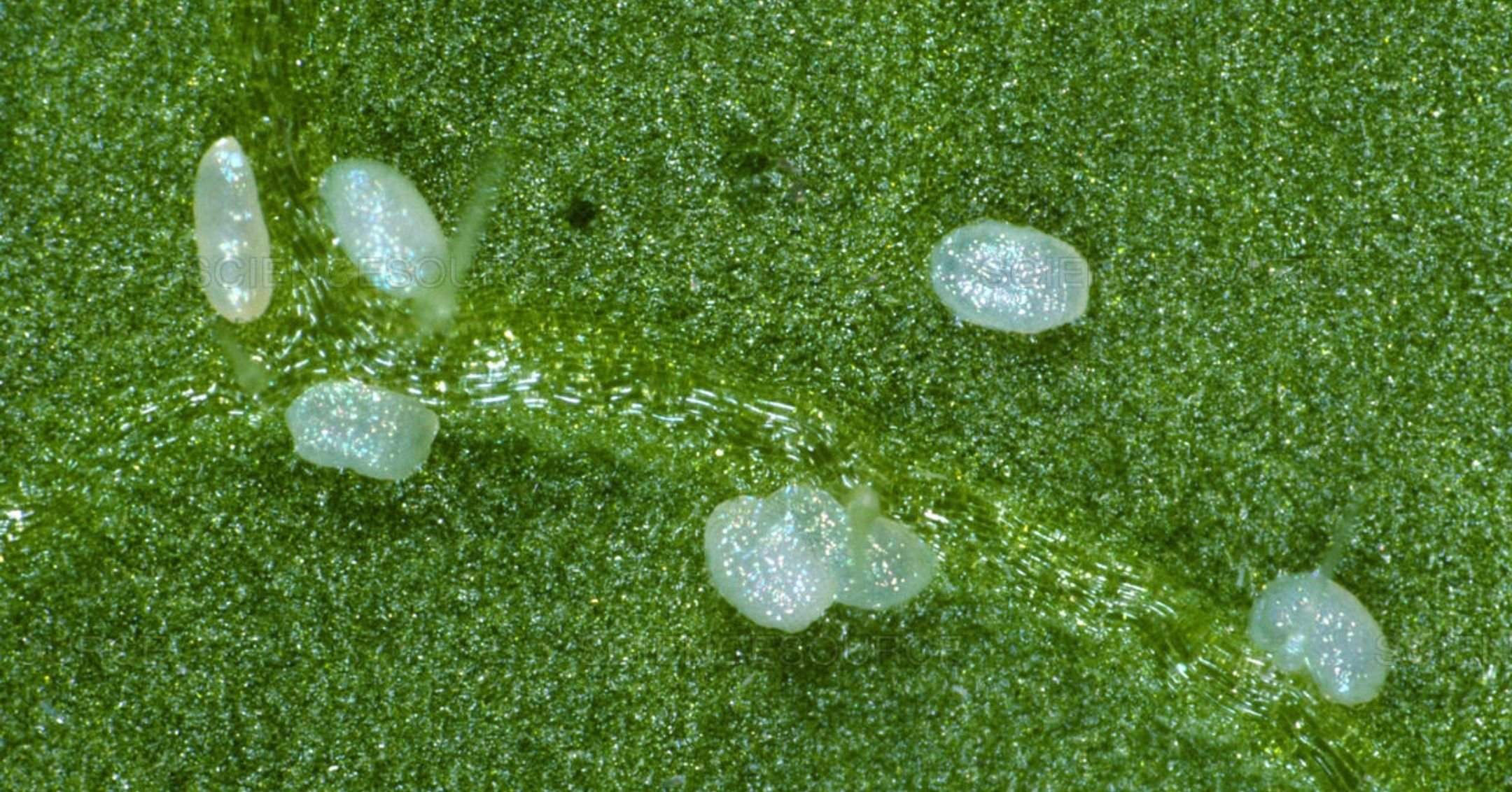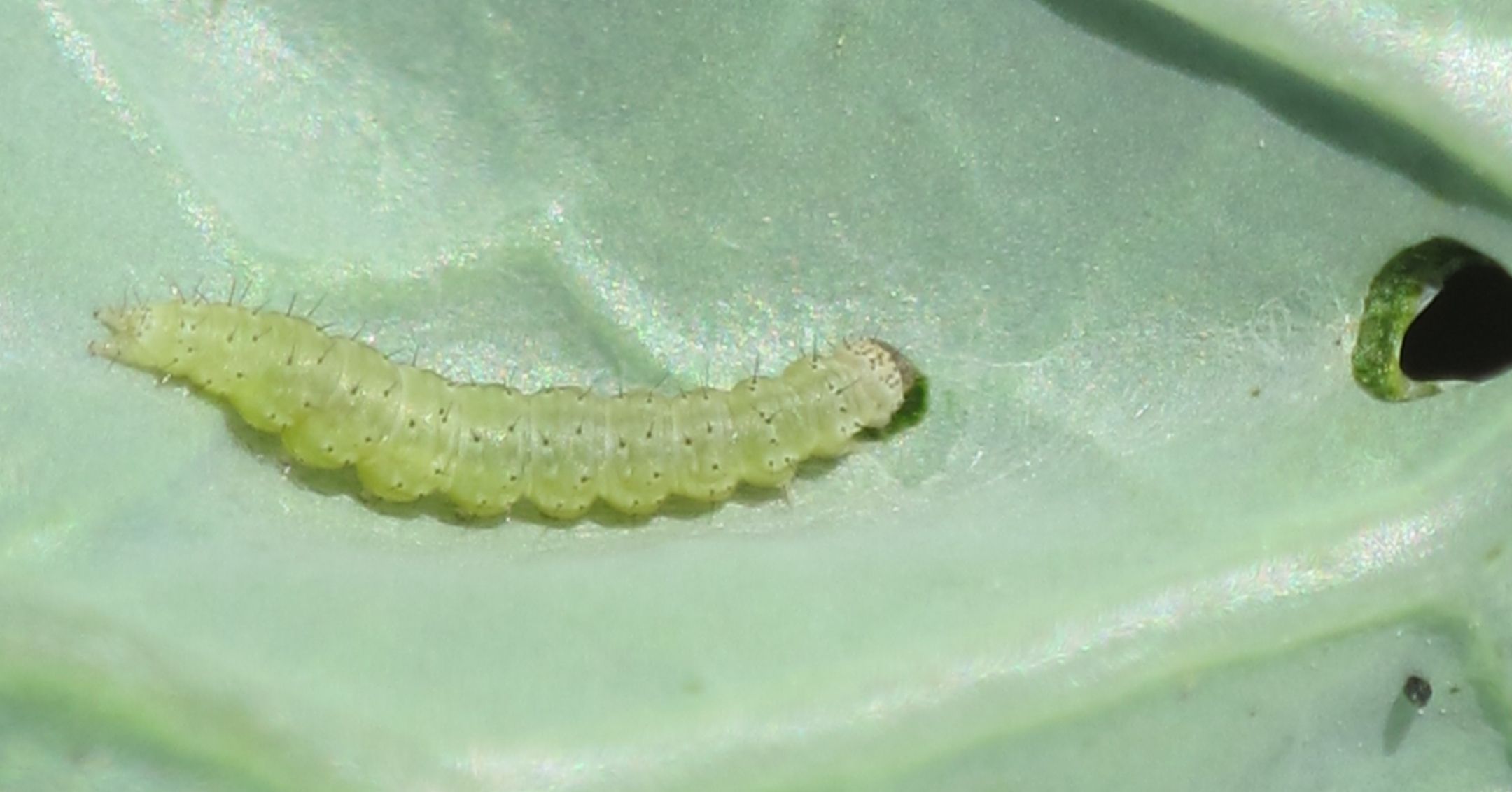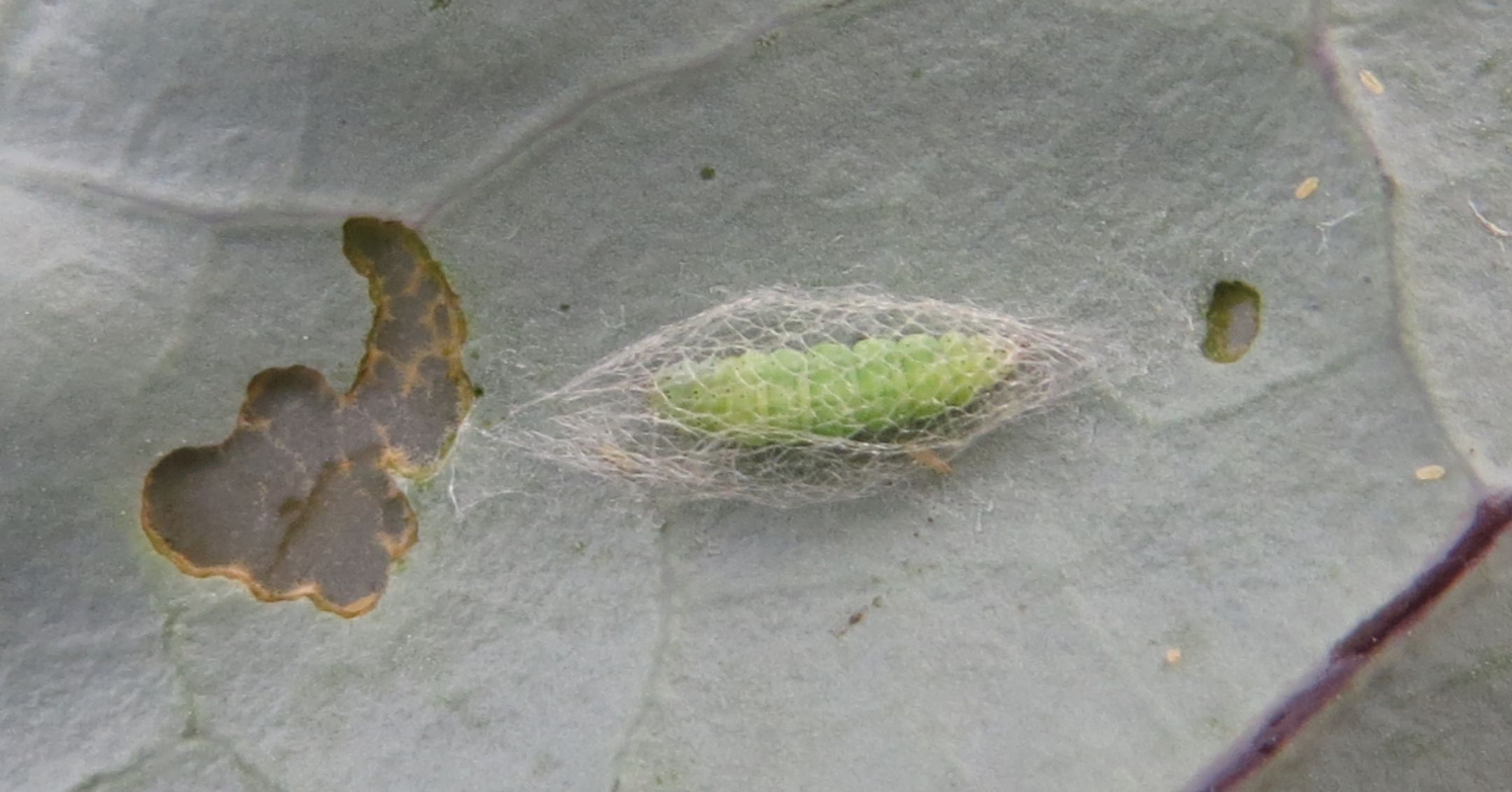Diamondback Moth




Description
Adult: Small (1/3 inch), slender, grayish brown moths with folded wings that flare outward and upward at the hind end. Male moths have a row of three yellow diamond-shaped spots down the middle of their back.
Egg: Very small and yellow to white in color; laid singly or in groups of 2-3 on the underside of lower leaves or stalks.
Larva: Mature larvae are about 1/3 inch long with a pale yellow-green body that is pointed at both ends. Diamondback larvae are distinguished by their habit of wriggling vigorously or dropping from a plant on a string of silk when disturbed.
Pupa: Green in color and develop in a loosely spun, lace-like cocoon that is attached to the leaves or plant stems.
Life History
Diamondback moths overwinter as adults, but don’t survive the winter in colder areas of Utah. They are re-introduced to cooler areas on strong winds from warmer, southern locations. Adult flight occurs in the spring; first eggs are laid in the late spring and early summer. Eggs hatch within 4-8 days; larvae initially feed on the undersides of older or outer leaves of older plants. Larvae mature in 10-30 days depending on temperatures; pupation lasts for 10-14 days. Up to 4-6 overlapping generations of diamondback moth may occur each year in Utah.
Damage
Diamondback moths prefer cabbage and broccoli, but will feed on other cole crops and cruciferous weeds. Immediately after hatching, tiny larvae mine through leaves (leaving the upper side of the leaf intact) creating small depressions called “window panes” that appear as holes. This damage primarily occurs on outer or older leaves of older plants. Larvae will also feed on flower buds and floral stalks. Larvae present in the heads and stems at harvest reduce the marketability of the crop.
Monitoring
- Scout for larvae and pupae on leaves of susceptible plants at the seedling stage, during crop thinning, and just before crop head formation. Select 10 mature, unfolded, leaves (but not old and discolored) from 10 different areas in a field (100 leaves total); inspect the leaves for “window pane” damage, larvae, and pupae.
- Use pheromone monitoring traps. Mount traps on a stake and place just above the crop canopy height at the field edges. Use pheromone lures specific for diamondback moth to attract male moths for counting.
- When monitoring, pay attention to border rows that are next to fields that have had high populations of diamondback moths and high weed populations. Adults commonly migrate to new areas from fields that have recently been harvested or disked under.
Management
Cultural
- Hand pick and destroy larvae.
- Heavy irrigation (or rainfall) can reduce early larval populations. Crops that are drip or furrow-irrigated may have higher diamondback moth populations.
- Use row covers on susceptible crops to exclude diamondback moths. Remove covers during flowering for pollination.
Biological
Parasitoid wasps that attack diamondback moth include Diadegma insulare, Diadromus subtilicornis, Microplitis plutellae, and Trichogramma pretiosum (egg parasitoid). Generalist predators include predaceous arthropods such as ground beetles, syrphid fly larvae, true bugs, lacewing larvae, and spiders.
Chemical
Worldwide, diamondback moth has developed resistance to multiple insecticides. Although no resistance has been reported in Utah, it is crucial to rotate insecticide groups to prevent the development of insecticide resistance. Consider chemical treatment options when 5% of the crops are infested with larvae and before they move into crop heads or broccoli and cauliflower buds expand. Bacillus thuringiensis var. kurstaki (Bt) and spinosad (e.g. Entrust) are organic options that can control small populations of diamondback moth, but may not be effective in major outbreaks.

